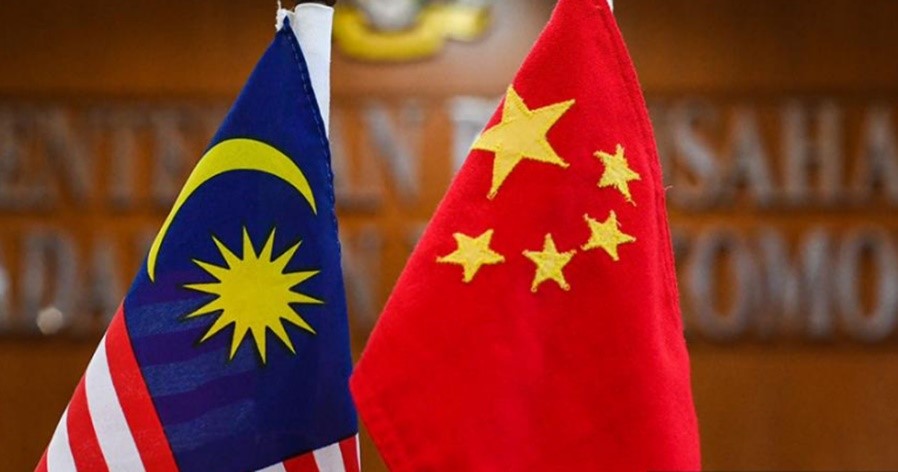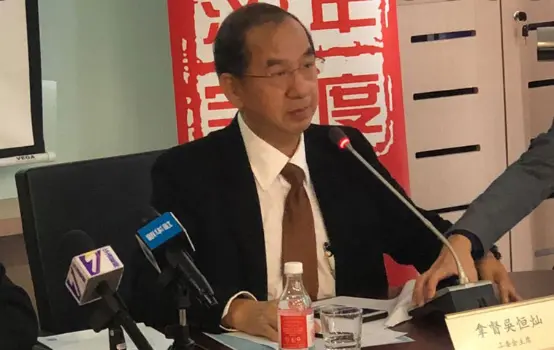By APD writer Li Zheyuan and translated by Sun Chenghao
In the "Belt and Road" initiative, cultural communications and people-to-people bonds have always been regarded as the most "virtual" concept. However, with the signing of the RCEP agreement, the role of cultural communication has once again come into prominence. This is indicated by an exclusive interview by Asia Pacific Daily with Dato Goh Hin San, director of the International Language Bureau of the Ministry of Education of Malaysia, chairman of the Malaysian Chinese Culture Center. The interview was conducted just prior to the opening of the 21st Century Maritime Silk Road International Expo in Guangdong in 2021.
Dato Goh Hin San believes that "culture take-off before economic landing". It means that cultural communications are the foundation of all economic cooperation. The quiet but smooth intra-regional cultural exchanges, like drizzles moistening every corner and nook, can enable countries in the region to have a more comprehensive understanding of China and also contribute to the comprehensive cooperation between regions. Such a role could be named "stepping stone".
In the Context of the Pandemic, the Peoples of China and Malaysia Continue to Communicate with Each Other
Dato Goh Hin San said that the people-to-people communications between China and Malaysia have been very extensive since Malaysia established diplomatic relations with China in 1974 and the Malaysian people's friendship with their Chinese counterpart has always been maintained at a very high level. According to the Datuk’s research, except for Pakistanis, Malaysian citizens are at the highest level among the world’s peoples in friendliness towards China. In particular, the Malaysian Chinese community has the best Chinese cultural ambience in the world, apart from Chinese Mainland, Hong Kong, Macao and Chinese Taiwan.
According to the Datuk, in the seventh century AD, the Chinese Master Yijing set off from Guangzhou and traveled along the sea lanes to Indonesia, Malaysia, and India. He was the pioneer to carve out the Maritime Silk Road. Master Yijing is highly reputed in Southeast Asia, especially Malaysia, which lays a solid foundation for the non-governmental friendship between peoples from China and Malaysia.

Although the offline communication between the two countries has been truncated due to the pandemic, the people-to-people communications between the two countries have never been cut off. After Wuhan reported the epidemic in early 2020, Malaysia immediately provided support for Wuhan, while after the pandemic wreaked havoc in Malaysia , China in reciprocity has been supplying multiple rounds of aids to Malaysia.
The Wisdom of Traditional Chinese Medicine Benefits Overseas through the Internet
Dato Goh Hin San said that the non-governmental Chinese medicine community has been making outstanding contributions to the Malaysian people during the pandemic. Chinese traditional medicine practitioners introduced some of their prevention and treatment skills to Malaysians through online exchanges. Malaysians who have a cultural recognition on traditional Chinese medicine can also attain support from relevant aid at any time.
Recently, the Chinese Writers Association and the Malaysian Chinese Culture Center joined hand in hand, establishing the "Chinese Literature Readers Club" in Malaysia. This is the first Chinese literature readers club in Southeast Asia. With this platform, the non-governmental Chinese medicine community can spread Chinese medicine treatment and prevention programs throughout the entire Malaysia, benefiting millions of local residents.
Chinese Vaccines Form a "Vaccine Culture" in Malaysia
The Datuk said that there are currently three Chinese-made vaccines being in operation in Malaysia, of which 16 million doses from Sinovac Biotech have been put into use in Malaysia. In response to the special situation in eastern Malaysia, the Malaysian government also specially ordered 3.5 million doses of single-dose-effective vaccines from CanSino Biologics Inc. When the first batch of 200,000 doses of vaccine arrived in Malaysia in mid-August, it caught the attention of the local people.
Thanks to the good relations between China and Malaysia and the trust in the Chinese vaccine research and development team, many people in Malaysia designate Chinese-made vaccines when vaccinating. This hints that a high degree of trust has been established between the two countries. At the national level, China in addition donated 500,000 doses of Sinovac vaccine to Malaysia.
Dato Goh Hin San believes that vaccine operations have been translated into "vaccine culture" in Malaysia. After receiving Chinese vaccines, Khairy Jamaluddin, the Minister of Science, Technology and Innovation of Malaysia, publicly stated that "my Chinese has become better" and expressed his gratitude in Chinese to China .
"Cultural Take-off before Economic Landing"
The Datuk believes that in order for 15 countries to work together to conduct an effective operation, it is necessary to implement the policy of "cultural take-off before economic landing". He said that this should be the most prioritized policy issue that needs to be resolved immediately. All of China's economic communications with other countries must be preceded by cultural activities. In the case of the Chinese vaccine operation in Malaysia, an expression of "Vaccination can help you learn Chinese" managed to dispel most people's worry about vaccines. By a similar way, it could be easy to generate a sense of affinity with China and the Chinese people in the local area.
Dato Goh Hin San said that China’s transcultural communication activities should pay attention to “breezes and drizzles” instead of “gusts and storms”, which could smoothly and quietly make mutual interest and accommodation between peoples through osmosis, as the Chinese-Korean Cultural Communication Year did.
Dato Goh Hin San suggested that China and the other 14 parties to the RCEP agreement should carry out long-term transcultural communication activities such as the "Cultural Communication Year", maintaining continual efforts, not trying to achieve it overnight. When telling Chinese stories, only half of it relies on how to narrate. The other half relies on how to make audience receive it well. The latter half requires adaptation to different conditions of each country.
(ASIA PACIFIC DAILY)
 简体中文
简体中文

